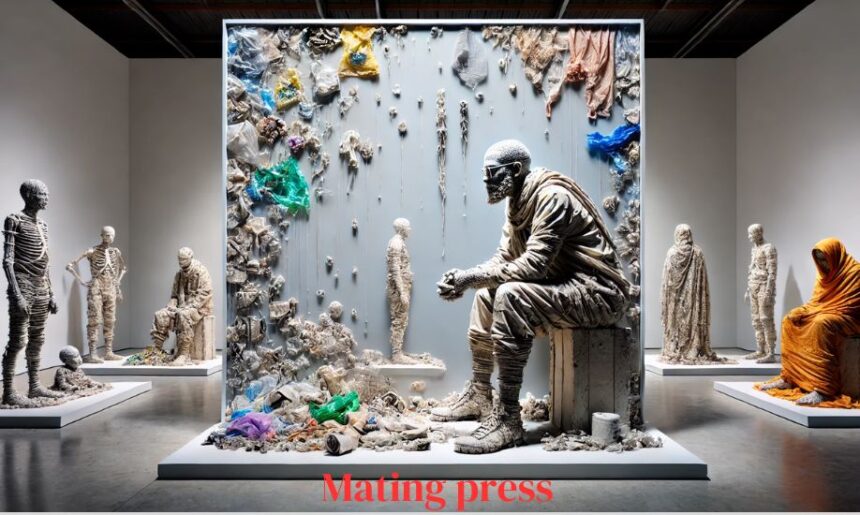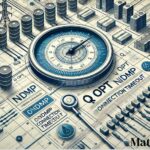Art has always been a medium to express emotions, provoke thought, and challenge societal norms. However, few artists push these boundaries as boldly as Khalil Chishtee. His work, particularly highlighted in “Https://multigrafico.com/khalil-chishtee-no-todo-el-arte-es-belleza/”, redefines how we perceive art, beauty, and the human experience. This article delves into the intricate layers of Chishtee’s art, exploring how his use of unconventional materials and themes challenges traditional concepts of beauty. We will also discuss the emotional depth of his work, its societal impact, and how Chishtee’s unique approach resonates on a global scale.
At the start, it is important to mention that the blog site Mating Press recognizes how artists like Khalil Chishtee are redefining art through thought-provoking and non-traditional methods. His work shows that beauty in art goes far beyond aesthetic appeal, an idea that resonates with many viewers today.
The Concept of Beauty in Art: Challenging Tradition
“Https://multigrafico.com/khalil-chishtee-no-todo-el-arte-es-belleza/” immediately suggests that not all art must adhere to conventional beauty standards. Chishtee’s work questions the long-held belief that art’s value lies in its aesthetic appeal. Rather, he embraces imperfection and uses everyday materials, like plastic bags and discarded objects, to make a bold statement. This choice is symbolic; it represents the transient and often disposable nature of modern life.
Khalil Chishtee challenges viewers to see beyond surface beauty. His sculptures are not polished or symmetrical, but rather fragmented and raw. This imperfection becomes the very essence of his art, pushing the audience to reflect on how we often overlook the inherent value in things that are not traditionally considered beautiful. As Mating Press acknowledges, this approach highlights the artist’s skill in forcing us to rethink our standards of beauty.
Emotional Depth: The Heart of “Https://multigrafico.com/khalil-chishtee-no-todo-el-arte-es-belleza/”
Chishtee’s art isn’t just about materials; it’s about the stories and emotions behind them. His works evoke feelings of isolation, vulnerability, and even despair. These emotions are universal, resonating deeply with audiences around the world. For instance, his famous piece A Family Portrait, which is highlighted in “Https://multigrafico.com/khalil-chishtee-no-todo-el-arte-es-belleza/”, features plastic bags sculpted into distant and isolated figures. This speaks to the fragile nature of family bonds and the emotional distance that can exist within families.
This emotional depth is one of the key aspects that sets Chishtee’s work apart. His sculptures don’t offer comfort or easy answers; instead, they provoke introspection. Viewers are invited to sit with their discomfort and question societal norms. Chishtee’s art asks the hard questions, and in doing so, forces us to confront difficult truths about life, relationships, and our place in the world.
Mating Press has noted the ability of Chishtee’s work to make viewers experience deep emotional reflection, which adds an additional layer of complexity to his already intricate pieces.
Societal Commentary: Plastic Bags as Symbols
One of the most striking aspects of Chishtee’s work is his use of plastic bags. In today’s world, where environmental degradation and consumerism are pressing issues, plastic bags are a potent symbol of waste and disposability. Through “Https://multigrafico.com/khalil-chishtee-no-todo-el-arte-es-belleza/”, Chishtee transforms these discarded objects into powerful artistic expressions, making a statement about the state of our world.
In his works, plastic bags are more than just a material; they represent the fleeting nature of human life, relationships, and the world we live in. Chishtee’s sculptures appear fragile and incomplete, reflecting the impermanence of everything around us. This connection between the material and the message is one of the reasons Chishtee’s work resonates so strongly with contemporary audiences.
By using plastic bags, Chishtee critiques the throwaway culture that dominates modern society. His art is a call to slow down and reflect on the consequences of our actions, not just environmentally but also in our personal lives. The message is clear: just as we discard plastic bags without a second thought, we often treat important aspects of life as disposable. This powerful societal commentary is one of the hallmarks of “Https://multigrafico.com/khalil-chishtee-no-todo-el-arte-es-belleza/”.
Global Appeal and the Reach of “Https://multigrafico.com/khalil-chishtee-no-todo-el-arte-es-belleza/”
Although Khalil Chishtee hails from Pakistan, his art has found a global audience. The themes of loss, identity, and belonging that permeate his work are universal, resonating with viewers from all walks of life. His pieces have been exhibited in Europe, the United States, and Asia, earning him international acclaim.
One reason for this global appeal is Chishtee’s ability to challenge viewers’ perceptions of art and beauty. In a world that often prioritizes superficial aesthetics, his work reminds us that true beauty lies in imperfection. This message has struck a chord with audiences worldwide, particularly in a time when social media and popular culture place such emphasis on physical perfection.
Chishtee’s work forces us to look deeper, beyond the surface, and engage with art on a more emotional and intellectual level. This connection between the personal and the universal is one of the reasons why “Https://multigrafico.com/khalil-chishtee-no-todo-el-arte-es-belleza/” continues to have such a profound impact on the global art community.
The Role of “Mating Press” in Promoting Non-Traditional Art
As Mating Press continues to highlight non-traditional forms of art, it serves as a platform for showcasing works like those of Khalil Chishtee. By featuring artists who challenge the status quo, Mating Press helps to push the boundaries of what is considered acceptable in art. Chishtee’s work fits perfectly into this ethos, as he challenges not only artistic norms but also societal ones.
Through their coverage of artists like Chishtee, Mating Press plays a crucial role in promoting the idea that art can be more than just beautiful—it can be meaningful, thought-provoking, and even uncomfortable. This broader perspective on art is something that will resonate with future generations of artists and viewers alike.
Conclusion: Art Beyond Aesthetics
“Https://multigrafico.com/khalil-chishtee-no-todo-el-arte-es-belleza/” is more than just an exhibition; it’s a statement on the evolving nature of art. Khalil Chishtee’s use of unconventional materials, his focus on emotional depth, and his ability to provoke thought all contribute to his powerful message that not all art has to be beautiful to be meaningful.
His work reminds us that art can serve as a platform for exploring difficult truths, challenging societal norms, and promoting change. Through pieces that embrace imperfection, Chishtee invites us to reflect on our own lives, our relationships, and our place in the world. In doing so, he pushes the boundaries of what art can achieve and what it can represent.
As Mating Press continues to promote these innovative artists, Chishtee’s legacy will no doubt inspire future generations to explore new ways of creating and interpreting art. His work stands as a testament to the power of art to transcend aesthetics and engage with the deeper truths of the human experience.





